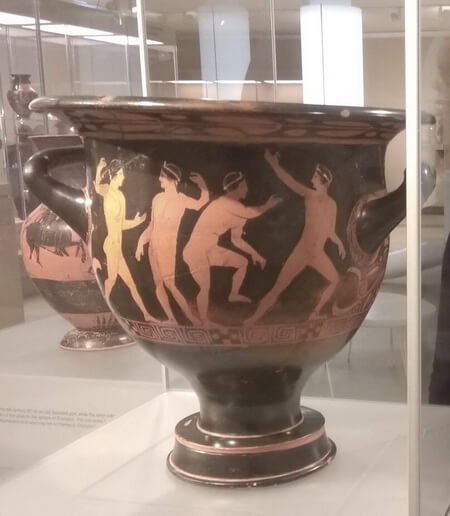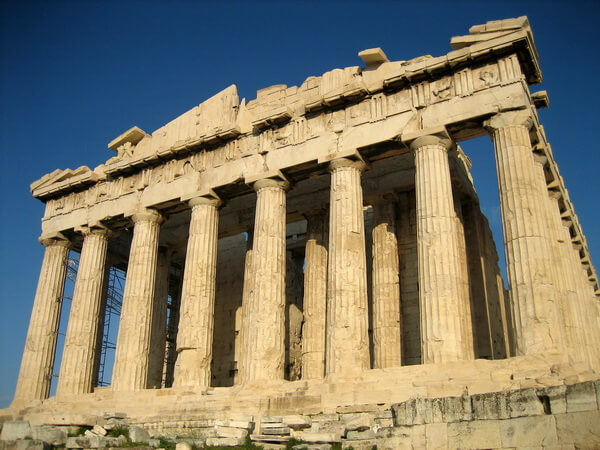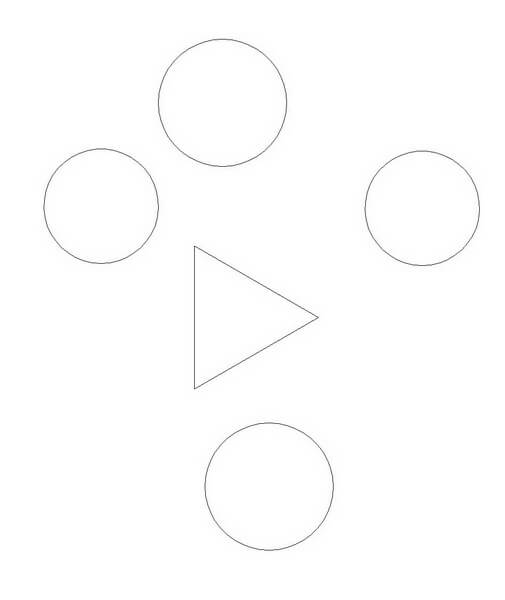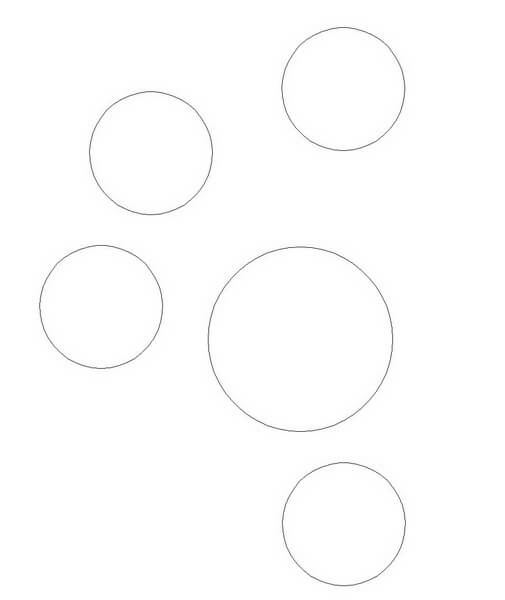The word composition is of Latin origin, meaning the arrangement of parts in something. Figuratively, it also refers to a work of art, drawing, or painting, representing the inner structure or construction of artistic creations.
The artist strives to achieve aesthetic order in his work while realizing his idea, which is the center of interest for the artwork. This article aims to explore what makes an artistic arrangement successful.
Composition refers to the arrangement of basic artistic elements and their relationship to the work of art as a whole. A well-constructed composition captures attention with its main element and guides the viewer's eye as intended by the artist. Within it, elements should complement each other rather than distract. A good artistic composition aims for harmony through the selection and placement of design elements, following the principles of composition, and selecting the right techniques.
A visual art composition is the arrangement of the basic elements of visual arts and design according to the following principles: rhythm (repetition), harmony (unity), contrast, balance, and dominance.
While the eras of art history and the styles of fine art change, the principles of artistic composition remain constant. Understanding these principles is crucial, whether you’re working with traditional techniques or digital tools.
What Are the Basic Elements of Visual Arts?
We use visual elements when creating a work of art. Through them, artistic communication is realized, that is, the transmission of the artist’s message.
Visual elements are the basic components of the composition, and that is why we need to know them.
The basic elements of design and visual arts are as follows:
- Point
- Line
- Shape
- Texture or structure
- Tonal value
- Position in space, direction
- Size
In some instances, professional literature includes elements such as color, material, construction, composition, and artistic techniques as means of visual communication.
Basic Principles of Composition
Visual elements can be arranged together within a composition according to the following principles:
- Rhythm (Repetition)
- Harmony (Unity)
- Contrast
- Balance
- Dominance
1. Rhythm (Repetition)
Rhythm is present when elements are repeated at certain intervals or on the basis of a certain system.
Rhythm is one of the oldest and most basic principles applied in the field of art that creates order within a composition. Rhythm emphasizes important elements of an artwork.
If the series of elements is too short, it cannot be experienced as a rhythm. With too long a series, the repetition can become boring.
In decorative arts, the rhythm of regular repetition of elements is often applied. However, the rhythm can also be irregular if the elements go through a change as they follow one another.
If identical elements are repeated, the rhythm becomes uniform and monotonous. The rhythm will be dramatic or dynamic when repeating elements with different characteristics.
Rhythm can appear in several different ways in a work of art, and there can be several rhythms within the same composition. Rhythm can refer to the repetition of the shape, color, or size of the elements that make up a composition.
Rhythm can be achieved by arranging the elements horizontally, obliquely, vertically, spirally, or circularly, but it should always follow the principles of decorative composition: repetition, alternation, or symmetry.

Application of Rhythm in Architecture
Architectural artworks provide us with great examples of the application of the principle of rhythm.
The pillars of ancient Greek temples form an even row, as do the windows of Renaissance palaces. In these rhythms, the same elements are repeated at the same distance, which is why these buildings radiate harmony.

Arabesques in Islamic architecture, as well as the rose windows of Gothic cathedrals, are also excellent examples of the application of rhythm in architecture.
2. Harmony (Unity)
Harmony in artwork is achieved by assembling elements in a way that they work together, creating a pleasing composition for the eye.
Unity in an artwork is achieved by combining the elements of design, design elements, composition principles, and chosen techniques into a harmonious whole.
Harmony can include colors, tones, and categories of elements within a composition.
An artist should select design elements, composition principles, and techniques that harmonize with the idea they want to communicate through their artwork. A work of art with disorganized and unrelated parts would quickly lose our interest.
Symmetry
One of the most important and basic criteria for harmony is symmetry.
Additionally, having a certain amount of asymmetry or disharmony is desirable for a work of art to feel lifelike. While strict symmetry is not present in nature, excessive disharmony can lead to a sense of disorder in the composition. Symmetry, as a fundamental principle of aesthetics, gives a sense of balance and tranquility to a work of art.

Sculptures in ancient Egypt were based on this concept. If we draw the axis through the center of the sculpture, it will be divided into two completely symmetrical sides.
Harmony of Colors
Harmony can be achieved in several ways by using colors in a work of art:
- Using different shades of the same color
- Using colors of the same tonal value
- Using colors of the same saturation
- Harmony between complementary colors is achieved by adding neutral grays that create bonds between two opposing colors.
3. Balance
Balance in a work of art is an arrangement of design elements that ensures the visual stability of the composition.
The balance of a composition can be dynamic or static, depending on the relationship between the elements.
Central, symmetrical composition is static and balanced. The static composition is calm, there is no movement in it.
An asymmetrical composition creates a dynamic balance, guides the eyes between the points, and creates a connection between the individual elements.
The principles of balance in a composition are as follows:
- Movement balances the mass
- An object that is in motion appears to be larger than one that is static.
- An object that is approaching us seems to be larger than one that is moving away from us.
- A lighter element appears to be closer than a darker element.
- Elements in warm colors appear to be closer than those in cool colors.
- The object on the edge of the composition appears larger than the one in the center.
4. Contrast
Contrast is the obvious difference between the properties, qualities, or values of two or more elements.
Visual arts are based on the unity of opposite elements. If the work of art consists of properly arranged, identical elements, it will not be interesting. If the size, color, or position of one element changes, a contrast is created.
Individual elements themselves are often not interesting, but they will become so in combination with an element that has different or even opposite properties. An object will look big if there is one next to it that is small, and light will look convincing if it is next to something dark.
The artist can combine greater and lesser contrast to achieve a gentler or more dramatic impression, according to his intention.
Contrast can be created in an infinite number of ways, with elements varying in quality or quantity. Contrast can be created in an infinite number of ways, with elements varying in quality or quantity.
For example, a small object contrasts with a larger one, and a glossy surface contrasts with a matte one. Additionally, there is a contrast between light and dark objects (light and shadow).

Contrast can also be achieved by using colors:
- Primary colors contrast with secondary colors.
- Warm colors contrast with cool colors.
- Complementary colors contrast with each other.
- Saturated colors contrast with matte colors.
5. Dominance
Dominance in visual arts refers to the element that represents the visual center, the main element of the artwork. The dominant element in a work of art is the one with the greatest emphasis and the other elements are subordinated.
In a well-arranged composition, it should be evident which element holds the central focus of the artwork. The secondary elements ought to be subordinate to the intended center of attention.
You can emphasize the focal point in various ways:
- Apply the strongest contrast of dark and light to the main element.
- Use interesting color contrast in the focal point.
- Render the main element in more detail than the secondary elements.
- Incorporate elements pointing to the main element,
- Apply the sharpest edges in the focal point.
An object can dominate due to its shape, size, color, position, or tonal value.



Systems Of Composition In Visual Arts
Based on shape or proportion, there are the following types of artistic compositions:
- Square
- Rectangular
- Circular
Based on the position in space, the composition may contain:
- Objects in the same plane (flat composition).
- Shallow display of space.
- Linear perspective.
- Closed composition: the focal point of the work of art lies within its boundaries.
- Open composition: the message of the artwork continues beyond its edges.
A composition may consist of identical or different elements, which may be similar (harmonic) or opposite (contrasting).
Composition based on the direction in space can be:
- Vertical
- Horizontal
- Central
- Diagonal
- Pyramidal
- Triangular
- Symmetrical
- According to the golden ratio
- According to the rule of thirds
Each art history era has its own characteristic compositional scheme.
In ancient Egypt, elements were arranged in horizontal rows, and Gothic art was characterized by symmetrical or triangular arrangements.
During the Renaissance, the pyramid-shaped composition was used the most, and the diagonal arrangement was used in Baroque art. Asymmetrical composition became popular in the 19th century.
The Golden Ratio
The golden ratio is a mathematical rule that is sometimes used in fine arts. According to the golden ratio, the perfect shape has a ratio of 1: 1.618. This proportion is pleasing to the eye.
The discovery of the golden ratio can be traced back to Euclid, a Greek mathematician who lived in the 4th century BC.

According to some opinions, the golden ratio has been present in architecture since ancient Greek times. The Parthenon on the Acropolis of Athens is often mentioned as the most famous example of the use of the golden ratio in architecture. Others say there is no direct evidence of the deliberate use of the golden ratio in the construction of the Parthenon.
Le Corbusier used the golden ratio when he constructed the Modulor, his famous anthropometric system of proportions. Salvador Dali applied the golden ratio to his famous painting The Sacrament of The Last Supper.
Types Of Artistic Representation
Artistic representation can be subjective or objective. If strong feelings contribute to the creation of the work of art, the artist will try to convey that to the viewers.
Realistic representation derives from the optical perception of objects, which means that the artist will choose the elements and materials with which to present the objects he saw. This method can be considered artistic only if it is not a passive imitation of seen things, but a visual reshaping.
Through the expressionist representation, the artist conveys through his work the impressions and feelings that prompted him to create a work of art. Emphasis is not placed much on the credible appearance of the objects.
Final Thoughts
Through the expressionist representation, the artist conveys through his work the impressions and feelings that prompted him to create a work of art. Emphasis is not placed much on the credible appearance of the objects.
Leave a comment below to share your thoughts. If you found this content valuable, don’t hesitate to share it on your social media platforms. Also, explore more posts on our website.

Debora
My name is Debora, and I’m the founder of Drawing Fundamentals. I work as a civil engineering technician. I acquired the basic knowledge necessary for freehand and technical drawing during my school training, further developing and perfecting these skills throughout my years in the profession. Through my blog, I aim to assist anyone interested in learning to draw.

